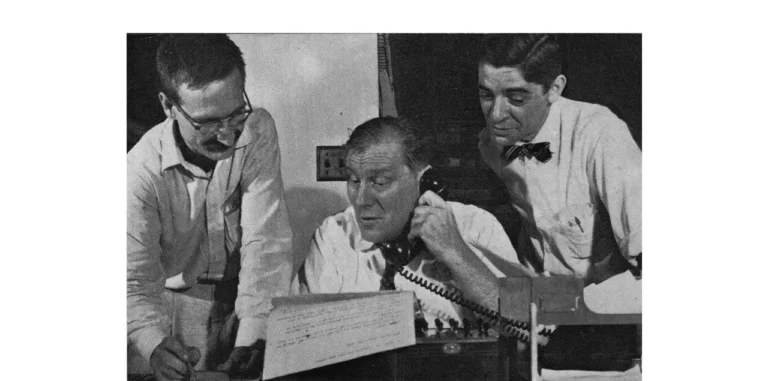How to Crank It Out
No time to write, you say? 5 ways to put the pedal to the metal.
Writing is a solitary endeavor. You sit at your desk, staring at a blank computer screen, hoping the words will come, and they will be the right ones.
OK, let’s stop right there. That’s Mistake No. 1. Composing perfect sentences in your brain and then sending them down to your fingers and onto the screen is TOO HARD. It takes way too much time to make so little progress.
In a perfect world, we would do our best writing while sitting at a sidewalk café, wearing a beret and drinking absinthe while inspiration seeps from every pore. (Note: I’ve tried this. It’s not inspiration. It’s actually perspiration, brought on by drinking too much absinthe.)
If you’re a communicator, writing doesn’t work that way. In the office, you’re surrounded by interruptions and endless, often inane requests for God Knows What. The second a creative idea pops in your head, someone wants to talk about the upcoming awards ceremony. Poof! Gone.
When COVID drove us to our home offices/kitchen tables/bedrooms, there were new distractions. Zoom meetings out the ying-yang. Even more requests. Not to mention your kids, your pets and, yes, your refrigerator.
Here are five tips to write better, faster ― and ultimately more effective ― stories.
1. Get more than you need. Want to be a faster writer? Be a better reporter. When you gather information and interview your experts, don’t just ask for what you need. Get more. If you’re telling a story on video, shoot extra b-roll.
This may take a little more time, but it’s time spent upfront and you’ll save more than that on the back end. When you discover a hole in your story (or your editor asks you questions), you may already have the answer in your notes.
2. Round up the usual suspects.. You need a go-to stable of sources inside your organization. Who can explain the financial side of a story quickly and clearly, especially when you’re in a hurry? Who can provide a good quote in a pinch? Who can you rely on to cut through the clutter and tell us what the latest org announcement really means ― and do so eloquently?
As a reporter, we used to call these people “quote factories.” They understood the issue, they knew what you were looking for and they delivered. I once knew a Chicago alderman, Roman Pucinski, a former Chicago Sun-Times reporter, who was so good at this that he spoke in succinct paragraphs, pausing in between to make sure I was keeping up. You could practically see the quotation marks. You have people like this in your organization. Make them part of your posse.
3. Use the CRAP method: Craft Really Awful Prose. This is the real key to cranking it out fast. The beauty of writing CRAP is that you can do it quickly. Free yourself from the bonds of perfection! It doesn’t matter. But here’s what does: When you write a draft ― even a lousy one ― you are so much closer to the finish line.
This is not magic. It’s about pushing your story down the road to completion, no matter what else is going on, and with no for perfection. Do an interview. Write it up. Gather some facts. Throw ‘em in. Just keep adding and pushing and moving stuff around. We’ll clean it up later.
4. Be a good news-jacker. The easiest stories to write are those that have already been written. I’m not talking about plagiarizing other people’s work. Take stories in the news that are relevant to your organization, and your industry, and make them your own.
You can do this in a couple of ways: Localize the news to your business or community. Insert one of your experts to add analysis and commentary. Link to the original piece to give your readers more context. This is what news outlets do when they follow up on a story by a rival.
5. Go back to basics. It’s called the Inverted Pyramid. It’s what every reporter learned early on: Put the important stuff at the top and work your way down from there. There’s more detail and less-important stuff lower in the story for people who are really interested in the topic. And those who aren’t haven’t missed what they really needed to know.
My colleague Kristin Graham reminds us that after the first 111 words, readers stop reading. That’s why she recommends BLOT ― Bottom Line On Top. While this is rather disheartening for writers, it reminds us to focus on what the audience cares about in the precious moments we have their attention.
Ragan Consulting Co-founder Jim Ylisela cranked out this story and he can help you crank it out with the Build Better Writers program.
Contact our client team to learn more about how we can help you with your communications. Follow RCG on LinkedIn and subscribe to our weekly newsletter here.







